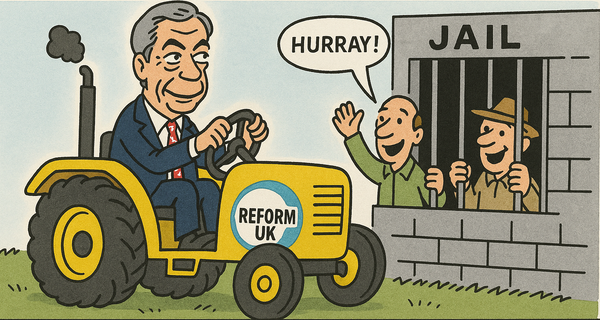The Social Diary: reads from the feeds
Capturing the most interesting bits of social media - and putting them on the web

Well, here's a thing. This post was going to be the end section of this morning's Engaged Reading Digest - but I send that out as an email, and the embedded post below just did not work with that. At all.
So, I'm spinning the idea off into its own series of posts — but they'll be web-only. (At least, until the Ghost team tweak the send-by-email templates to make embeds work better.)
Let me know what you think.
Full Feed: Brand as social publisher
Eight years ago (eight!) I nearly ended up working as part of this team at the World Economic Forum. In retrospect I'm glad I didn't, but looking at what they've achieved over that period is quite something.
A decade (or more) ago, people were talking about the idea of brands as media creators in their own right. Very, very few organisations have actually delivered on that promise — and some who had done so have retreated to more traditional marketing. But the WEF has continued to push forward with that vision.
In particular, some of my former students — David Knowles and Charlotte Beale — have given the WEF incredible reach via social videos, delivery punchy, compelling and informative material week after week.
4 countries that are making clean energy a way of lifeThe future is green. 📕 Read more: https://wef.ch/2EkLUnu
Geplaatst door World Economic Forum op Maandag 16 december 2019
Social Snacks
Other posts on social media that caught my eye.
Time rules for social video
Talking of social video, this is a handy expansion beyond the standard “you have 3 seconds to get someone's attention”.
When creating a video for social media:
— Matthew Kobach (@mkobach) December 29, 2019
• You have 1 second to convince someone to watch for 3 seconds
• You have 3 seconds to convince someone to watch for 10 seconds
• After 10 seconds the narrative needs to convince someone to watch until the end
We'll be looking at stuff like this in much more detail in my social video course next month.
Less is more (traffic)
One of the really odd things about jorunalism's reponse to the growing attention crisis is that we are just producing ever more content — adding to it. Ben's found some good evidence that there are other approaches that work.
I love @dennikN's end of year infographic.
— Ben Whitelaw (@benwhitelaw) January 7, 2020
This one shows that, for the fifth year in succession, the team wrote fewer articles than the previous year despite having more journalists on staff.
Less is more. Focus is everything.
https://t.co/uu0q3eWmLl
Instagram Fact Checking: GO!
First time I’ve seen a #fakenews / Fact Check warning on Instagram
— Matt Navarra (@MattNavarra) January 7, 2020
h/t @itshqip pic.twitter.com/virTsmlkIt
Australia is a hellish vision of our future — in more ways than one
When we say Australia now is a vision of the planetary future it means this, also: the use of disinformation to scapegoat and misdirect, and further delay action on climate change
— Jason Wilson (@jason_a_w) January 7, 2020
Got any suggestions? Drop me a line.





